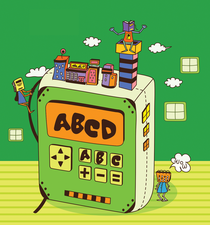Puzzles and brain teasers
Puzzling

Creating and solving letter and number puzzles is a popular pastime. We look at some of the free software that is available for this hobby on Linux.
Tricky puzzles, word games, and number problems are very popular – and not just in the depths of winter. The ability to apply yourself to a task and completely block out your surroundings is a distinctive personality trait for engineers, mathematicians, and other creative people. Scientific studies have demonstrated that puzzles provide mental stimulation and can even slow down the progression of Alzheimer's Disease [1].
If the original goal were just the pleasure of solving and cracking puzzles, it is now also considered a pastime with an intellectual benefit: brain training ("keeping your mind fit") and strengthening and increasing general knowledge. This is true both for creating the puzzle and finding a solution. In championships, the participant who solves the given puzzle in the quickest time is the victor.
Puzzle design varies in content, arrangement, shape, and size. Picture, syllable, crossword, and number puzzles are well-known examples. The solutions can often be discovered with the help of logical thought processes or graph theory (e.g., the famous number squares, Sudoku).
[...]
Buy this article as PDF
(incl. VAT)
Buy Linux Magazine
Subscribe to our Linux Newsletters
Find Linux and Open Source Jobs
Subscribe to our ADMIN Newsletters
Support Our Work
Linux Magazine content is made possible with support from readers like you. Please consider contributing when you’ve found an article to be beneficial.

News
-
Two New Distros Adopt Enlightenment
MX Moksha and AV Linux 25 join ranks with Bodhi Linux and embrace the Enlightenment desktop.
-
Solus Linux 4.8 Removes Python 2
Solus Linux 4.8 has been released with the latest Linux kernel, updated desktops, and a key removal.
-
Zorin OS 18 Hits over a Million Downloads
If you doubt Linux isn't gaining popularity, you only have to look at Zorin OS's download numbers.
-
TUXEDO Computers Scraps Snapdragon X1E-Based Laptop
Due to issues with a Snapdragon CPU, TUXEDO Computers has cancelled its plans to release a laptop based on this elite hardware.
-
Debian Unleashes Debian Libre Live
Debian Libre Live keeps your machine free of proprietary software.
-
Valve Announces Pending Release of Steam Machine
Shout it to the heavens: Steam Machine, powered by Linux, is set to arrive in 2026.
-
Happy Birthday, ADMIN Magazine!
ADMIN is celebrating its 15th anniversary with issue #90.
-
Another Linux Malware Discovered
Russian hackers use Hyper-V to hide malware within Linux virtual machines.
-
TUXEDO Computers Announces a New InfinityBook
TUXEDO Computers is at it again with a new InfinityBook that will meet your professional and gaming needs.
-
SUSE Dives into the Agentic AI Pool
SUSE becomes the first open source company to adopt agentic AI with SUSE Enterprise Linux 16.

